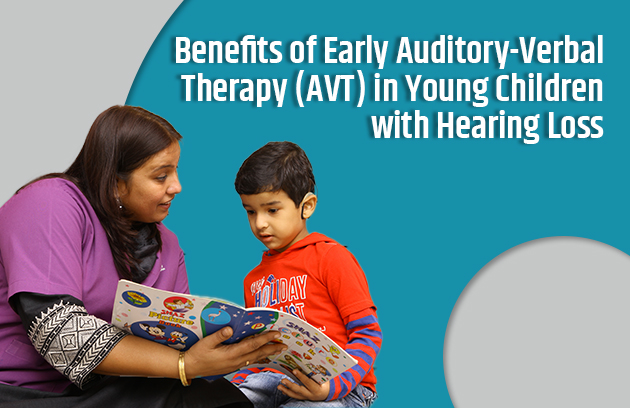Benefits of Early Auditory-Verbal Therapy (AVT) in Young Children with Hearing Loss
Auditory-Verbal Therapy (AVT), also known as auditory-based therapy, is an early intervention therapy for young children who are deaf and hard of hearing, or those who use hearing aids or cochlear implants. Auditory-Verbal Therapy (AVT) teaches children with mild to profound hearing loss how to communicate and listen through spoken language. The aim of Auditory-Verbal Therapy (AVT) is for deaf children to have the same ability to listen and speak as children who can hear properly. Children who get auditory-verbal therapy generally succeed in reading, learning, making friends, gaining self-esteem and in mainstream education.
Who Can Benefit from Auditory-Verbal Therapy (AVT)?
Auditory-Verbal Therapy (AVT) is most effective when children start at an early age, as young as two to three months old. Children who are born deaf or hard of hearing may benefit from Auditory-Verbal Therapy in all cases, regardless of whether they have hearing problems in only one ear, whether their hearing problem is temporary or permanent, or whether their hearing loss is mild to profound. Parents have to take part in therapy sessions with their child, learn how healthcare provides help in overcoming hearing loss, and continue to teach them outside of the sessions. Parent’s involvement in AVT Therapy helps to facilitate transfer of skills from the therapy setting to the home environment.
How is Auditory-Verbal Therapy (AVT) Effective for Young Deaf Children?
Auditory-Verbal Therapy (AVT) is the best approach for teaching deaf children to listen and speak. It focuses on developing spoken language and auditory skills through intensive therapy sessions with a certified therapist. In AVT therapy, a variety of techniques are used by the therapist to help the young children develop the abilities to hear and understand sounds like environmental sounds, speech sounds, and music. Then the children are encouraged to utilise their newly developed auditory skills in speaking, learning, and communicating with others. Auditory-Verbal Therapy is more successful at early age of a child because it takes advantage of brain’s plasticity, and critical period for language development.
How Does Auditory-Verbal Therapy (AVT) Work for Deaf Children?
An Auditory-Verbal Therapy session for a child with hearing loss includes the child, the child’s carers (parents, grandparents, siblings, etc.), and the Auditory-Verbal Therapist. This therapy helps the child learn to listen and speak through natural interactions such as playing, singing, and talking.
The therapist uses the following 10 principles in Auditory-Verbal Therapy (AVT) to assist deaf children in their development:
- Promotion of early diagnosis of hearing loss in infants, toddlers, and young children followed by immediate auditory-verbal therapy and audiologic management
- Get the maximum benefit of auditory stimulation through the use of appropriate, state-of-the-art hearing technology.
- Through active auditory-verbal therapy, parents and guides are the primary facilitators in supporting their child’s development of listening and spoken language.
- Parents and guides may help their child use hearing as a primary sensory modality.
- Auditory-Verbal Therapy helps the child integrate spoken language and listening into all aspects of his or her life.
- The active participation of parents and guides helps to create an environment in which children can listen and speak throughout their daily activities.
- Supporting the child’s ability to self-monitor spoken language through listening
- Use of natural developmental patterns for developing speech, communication, language, and cognition skills in children
- Encourage students to attend regular schools where they will have friends with typical hearing.
- Develop tailored auditory-verbal treatment plans using continuous formal and informal diagnostic tests.
Conclusion
An Auditory-Verbal Therapy (AVT) test helps young children who are deaf and hard of hearing, or those who use hearing aids or cochlear implants, grow up getting the same education as their peers. It allows the child to participate in mainstream society. During the first three and a half years of a child’s life, the brain has optimal neural plasticity. “Optimal Neural Plasticity” means that it is very easy for a child’s brain to change and adapt new skills through learning and early stimulation. An early Auditory-Verbal Therapy (AVT) test, provides the life of better hearing to a deaf or hard-of-hearing child.

